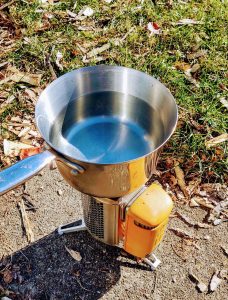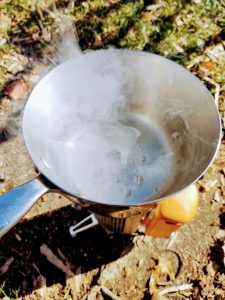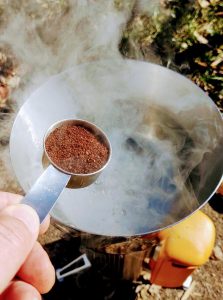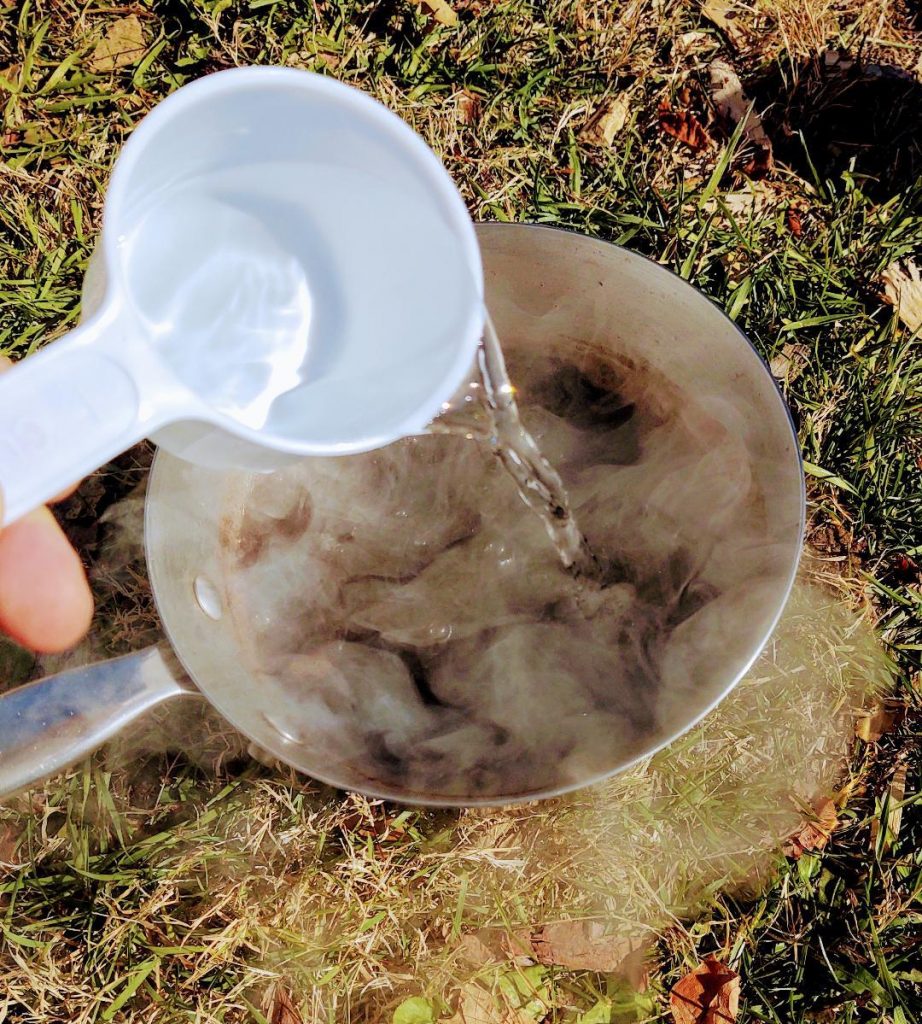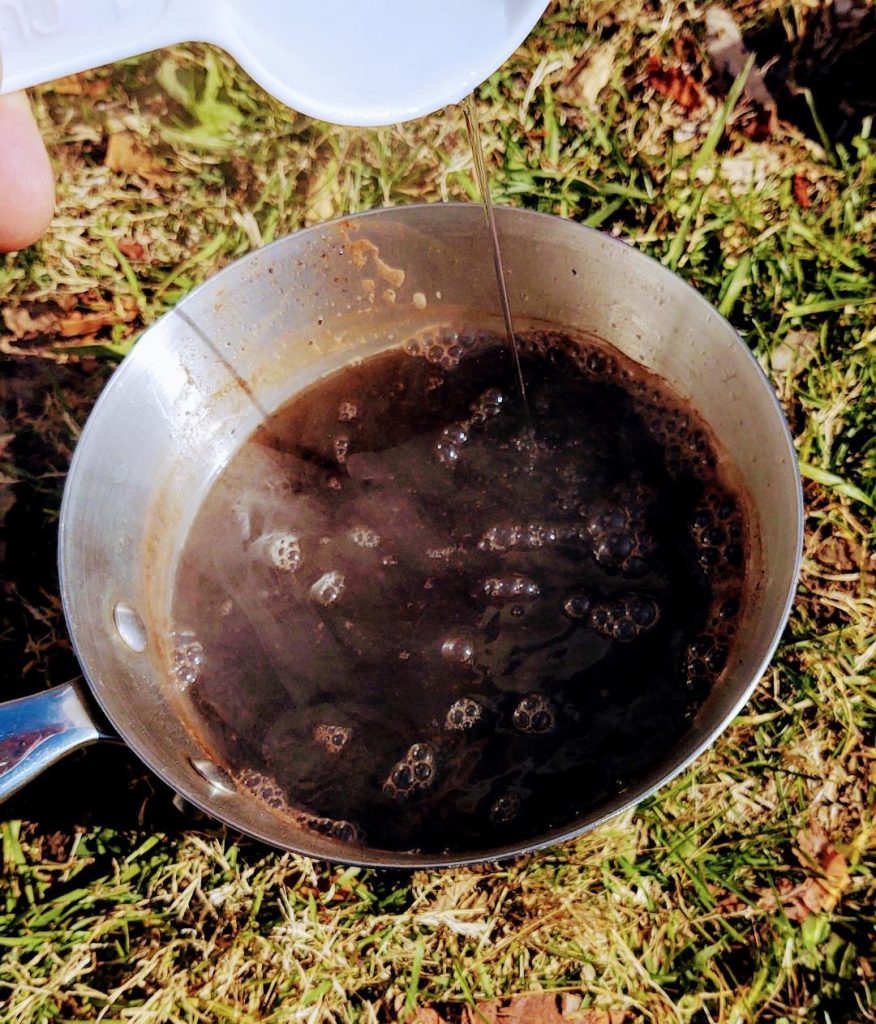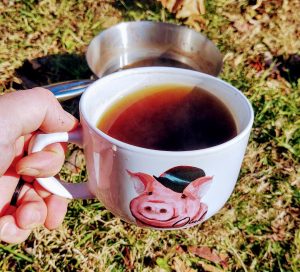Like many people, I identify as a coffee drinker. I consume it morning, noon, and night.
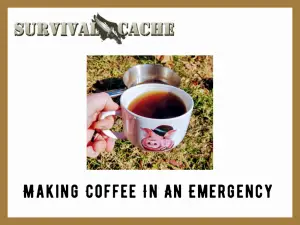
Everyone has their way of brewing a pot of this delicious drink, but an emergency or grid-down situation, can leave you without a cup of your favorite hot beverage.
Not to worry though, because I am going to show you my favorite way of making coffee that will work at on the trail or at home, even if you do not have any power.
SKIP AHEAD
How To Make Coffee During an Emergency
Below is a small list of items you will need.
- Pot to boil water in
- Stirring utensil (optional)
- Heat source
- Coffee grounds
- One cup of cold water
- Favorite drinking mug
I like making coffee outside so the heat source I use will be using is the CampStove 2 by Biolite, though any survival stove, grill, or campfire will do.
Set Up
Once I have my stove setup, I fill my pot with clean water leaving it a few inches from the top. I will explain shortly why I do not fill the pot all the way up.
Since this has to do with making coffee during an emergency, I will be using a simple pot I snagged from the kitchen. Just do not tell my wife.
Now, place the pot of water over the heat source making sure that it is stable and will not tip over.
Brewing
How hot the water should be is up for debate and a personal choice, but I like to bring the water to a full boil.
Once the bubbles are rolling over the surface of the water, I throw in a couple of scoops of coffee grounds.
When the grounds are put in, the water will foam up very quickly. This is why I do not fill the pot full of water. If the pot is too full the foam will spill over the edges, taking some of the grounds with it and making a mess.
A stirring utensil can help to break down the foam and mix any grounds sticking to the side of the pot, but it is not required.
With the coffee mixed in, I continue to boil the water for two to three minutes.
After a few minutes, remove the pot from the heat source and add about one cup of cold water. I like to quickly spread the cold water around when adding it in versus dumping it in one spot.
The cold water helps to settle the coffee grounds to the bottom of the pot instead of ending up in your mug. I then let the pot sit for another few minutes so that it can cool slightly and to give the grounds more time to settle.
Serving It Up!
When you are ready, grab your favorite mug, pour, and enjoy!
Now you will notice that I did not filter the coffee and that is because most of the grounds will sink to the bottom of the pot, However, a few will still find their way into the mug.
If you really cannot stand a few grounds in your mug, then use a funnel and filter to separate the liquid from the grounds.
Otherwise, drinking the coffee through closed teeth will stop the grounds before you swallow.
Open Question
Q: Why do you boil the water?
A: Boiling the water helps to make the coffee less bitter and creates a smoother taste. If you enjoy the bitter taste, then do not boil the water. Instead, simply bring the water to a simmer and then add in the grounds.
Wrap Up
The above method is sometimes referred to as “cowboy coffee” because it is supposedly the way cowboys used to brew their coffee.
I enjoy making coffee this way because it is simple, tastes great, and does not require any electricity or fancy equipment. With just a few simple tools and this method, you can enjoy a cup of coffee no matter the situation.
Thanks for reading and stay prepared!
Bonus Tip!
In the absence of proper coffee filters, an improvised filter can be made from a paper towel, handkerchief, bandanna, or even a t-shirt. Desperate times cause for desperate measures when coffee is involved!
What is your favorite way to make emergency coffee? Sound off in the comment section below and let us know.


